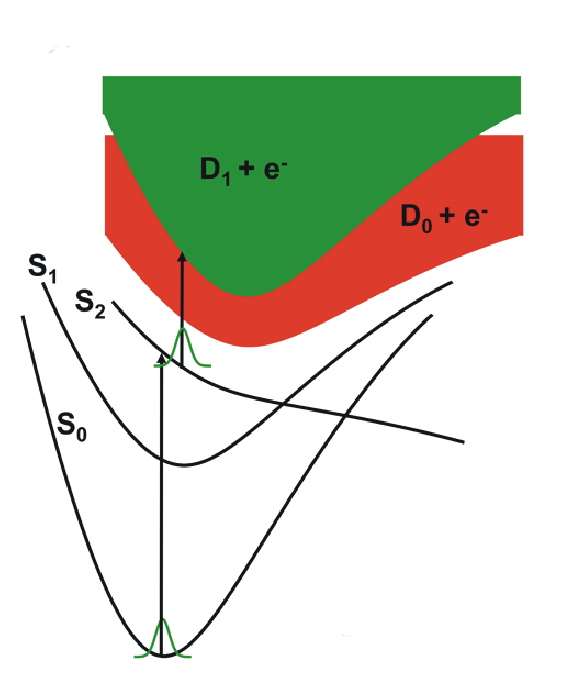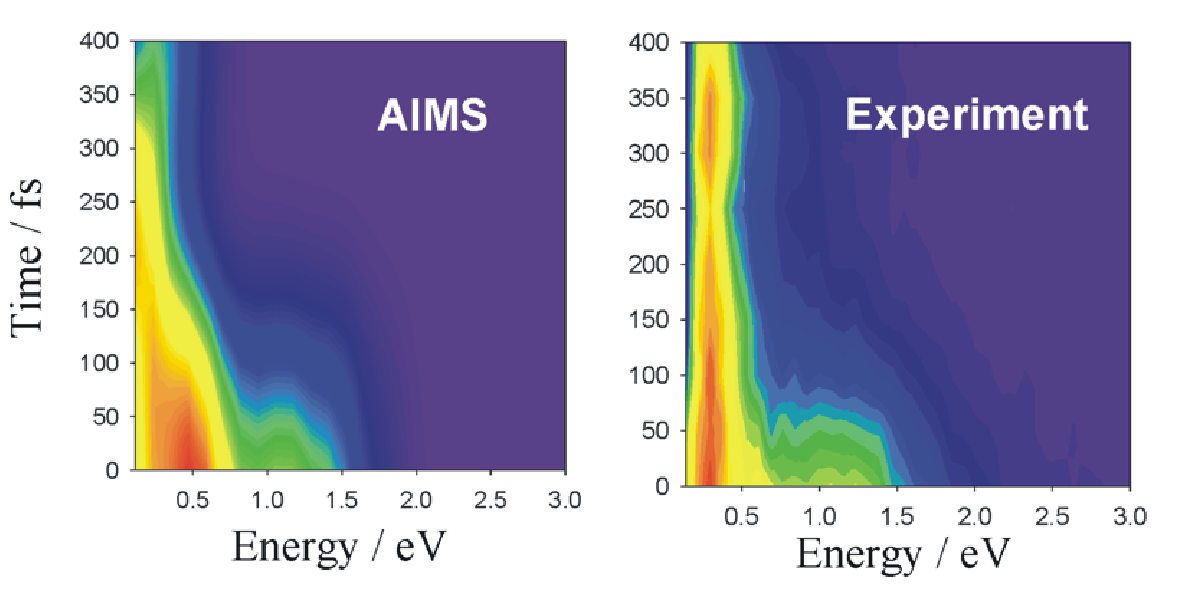Theoretical Atomic and Molecular Dynamics
Understanding charge and energy flow in molecules and materials is a key to designing better means for converting light into chemical and/or electrical energy. The theory group in PULSE is focused on developing and applying new methods that can describe the behavior of molecules after they absorb light.
Realistic description of the ultrafast response of molecules to light absorption must account for the quantum mechanical nature of both the electrons and the nuclei. We have developed the ab initio multiple spawning (AIMS) method which solves the electronic and nuclear Schrödinger equations simultaneously in order to accomplish this goal. A schematic of the method is shown below. The nuclei are described by quantum mechanical wavepackets which move on potential energy surfaces that are determined “on the fly,” i.e. during the dynamical simulation. A key ingredient to the AIMS method is the “spawning” which is a way to adaptively increase the size of the basis set describing the nuclear wavefunction when quantum mechanical effects are expected to be large.

Detailed comparison with ultrafast spectroscopy experiments has shown the accuracy of AIMS. For example, the time-resolved photoelectron spectroscopy (TRPES) experiment follows the dynamics of an excited molecule by probing with a laser pulse that can ionize the molecule. The kinetic energy of the ejected electrons is measured and a two-dimensional spectrum results, recording the number of electrons ejected with a particular kinetic energy for a given time delay between the pump and probe laser pulses. A schematic of the experiment is:

Using AIMS, we can model the TRPES spectrum for a variety of molecules, and comparison to experimental results shows the accuracy which can be obtained. For example, the simulated and experimental spectra for the thymine molecule are shown below.

Currently, we are extending the AIMS approach to describe the behavior of molecules excited by shaped laser pulses or in the presence of strong laser fields. We are working with experimentalists at PULSE both to validate the methodology and to learn how strong fields can be used to control the behavior of excited molecules. For example, is it possible to use strong laser fields to extend the excited state lifetime of a molecule? Or can we alter the outcome of a light-initiated reaction with a suitable strong field? Answering these questions will help us understand energy flow in molecules and how it can be controlled or influenced.